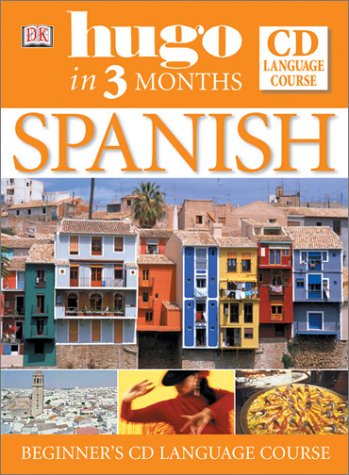How to Learn Spanish by Yourself in 18 Simple Steps:
I learned Spanish on my own, but it took a long time and a lot of personal dedication
and more but you have to keep going and do not stop at all.
The key is to throw yourself into the deep end. In my case, this was deciding to live abroad in Venezuela.
It was a stressful time. but I knew it was the only way to really become fluent in Spanish.
So, my seven-year do-it-yourself Spanish program really did work, and this is how I did it.
Contents:
- 1. Spend an hour a day on grammar exercises from a textbook
- 2. Read, underline, look up new words and read again
- 3. Watch movies and TV shows with subtitles
- 4. Listen to the radio in Spanish
- 5. Travel to Spanish-speaking countries
- 6. Spend time in Spanish-speaking environments
- 7. Volunteer for a long-term project in a Spanish-speaking country
- 8. Keep a Spanish blog
- 9. Take some online Spanish courses
- 10. Learn conversational Spanish with a partner
- 11. Get a Spanish tutor to help you out
- 12. Download Spanish apps to help build your vocabulary
- 13. Try some Spanish learning games
- 14. Sing along to Spanish songs
- 15. Learn Spanish through food and recipes
- 16. Talk to yourself in Spanish
- 17. Translate as often as you can
- 18. Change the language on your phone to Spanish
- So, what is the best way to learn Spanish?
1. Spend an hour a day on grammar exercises and tasks from a textbook
 I found a really simple grammar book and CD for beginners called “Hugo Spanish in 3 Months.” It’s full of short explanations and exercises. All the answers are in the back of the book, and it was an excellent source for picking up the basics: past, present and future tenses; prepositions; popular phrasal constructs and explanations related to plurals and gender.
I found a really simple grammar book and CD for beginners called “Hugo Spanish in 3 Months.” It’s full of short explanations and exercises. All the answers are in the back of the book, and it was an excellent source for picking up the basics: past, present and future tenses; prepositions; popular phrasal constructs and explanations related to plurals and gender.
I set aside one hour at the end of every day to go through the exercises. Whenever I came across a section that troubled me, I’d keep going back to repeat the exercises until the grammar began to sink in.
It’s also worth noting that I kept going back to this grammar book for reference well into my third year of living in Latin America. By that time I was really quite fluent, but little grammar doubts would pop up here and there when in conversation with friends.
I carried a notebook with me at all times, made notes for myself at the moment and then looked them up in “Hugo” later on that same day. In fact, I still carry a notebook with me!
2. Read, underline, look up new words and read again and again always:
Reading at home was, without a doubt, the single most useful and helpful activity I made time for in the early stages. I read anything I could get my hands on, but I loved reading novels by Paulo Coelho, translated from Portuguese to Spanish.
Why choose a Portuguese writer? Coelho’s writing is just so simple that it’s perfect for beginners. His sentences are short and easy to understand. His vocabulary is pretty basic too. For me, he was the perfect choice.
We didn’t have a TV or the internet in our apartment in Venezuela and, having lived through it, I highly recommend getting rid of other distractions when learning a language. I read every evening and weekend for about eight months.
Most Sundays I read from the moment I got up to the moment I went to sleep. Nobody does anything in the mountains on Sundays, except worship, and that really wasn’t for me.
So, I read and read and read and read.
I’d read a chapter, underlining anything I didn’t understand. Then, I’d look the words up in my paperback dictionary, note down the translations and read the chapter again. I learned so many new words and phrases, and it thoroughly prepared me for stringing sentences together.
3. Watch movies and TV shows with subtitles:
I used two TV techniques.
The first is for beginners: watching Spanish movies with English subtitles.
The second is for advanced speakers: watching Spanish movies with Spanish subtitles.
It might seem odd to watch in Spanish and read in Spanish at the same time, but it really does work wonders. Reading skills develop a lot faster than listening skills. By reading and listening at the same time, I was really able to improve my pronunciation.
It also helped me to speak like the locals. After a year in Venezuela, I moved to Argentina, where I lived for five years. Spanish in Venezuela is very different from Spanish in Argentina. Watching Argentine movies and looking for typical Argentine phrases helped me to fit in more and make friends.
Netflix always has an abundance of subtitled Spanish movies and series, while the video platform FluentU contains a diverse collection of Spanish media clips with interactive subtitles. These subtitles show contextual definitions, pronunciation and video references to help you understand everything and learn how to speak like a local.
4. Listen to the radio or TV in Spanish
Listening to the radio in Spanish is something you’ll find enjoyable after about two years of being fairly fluent. I found it impossible at first, but I recommend sticking with it. Understanding what someone says in a foreign language without seeing their lips can be tricky.
So this is it for today is post I hope you like it and if you want to learn ENGLISH.SPANISH visit my YouTube channel ZikoCourse.




The article has really peaks my interest.Private tutor near Manhasset I am going to bookmark your site and preserve checking for new information.
ReplyDeleteHere i found nice environment to get new ideas and views and the i have read the comments of this blog Private tutor near Manhasset and these are really nice and it is glad to comment here.
ReplyDeleteHey! I appreciate your efforts and enjoy your content. Ziyyara provides online classes to learn Spanish at your own home. More than 400 million people know Spanish, Spanish is the mother tongue of millions of people. Now Ziyyara have provided a glimpse of the overall benefits of online learning Spanish language.
ReplyDeleteHey! I enjoy your content and appreciate your efforts. Enroll in Ziyyara's live online Spanish course if you want to learn Spanish and discover the hidden benefits of learning a new language. online learning Spanish language will boost your confidence and communication skills to the next level.
ReplyDelete